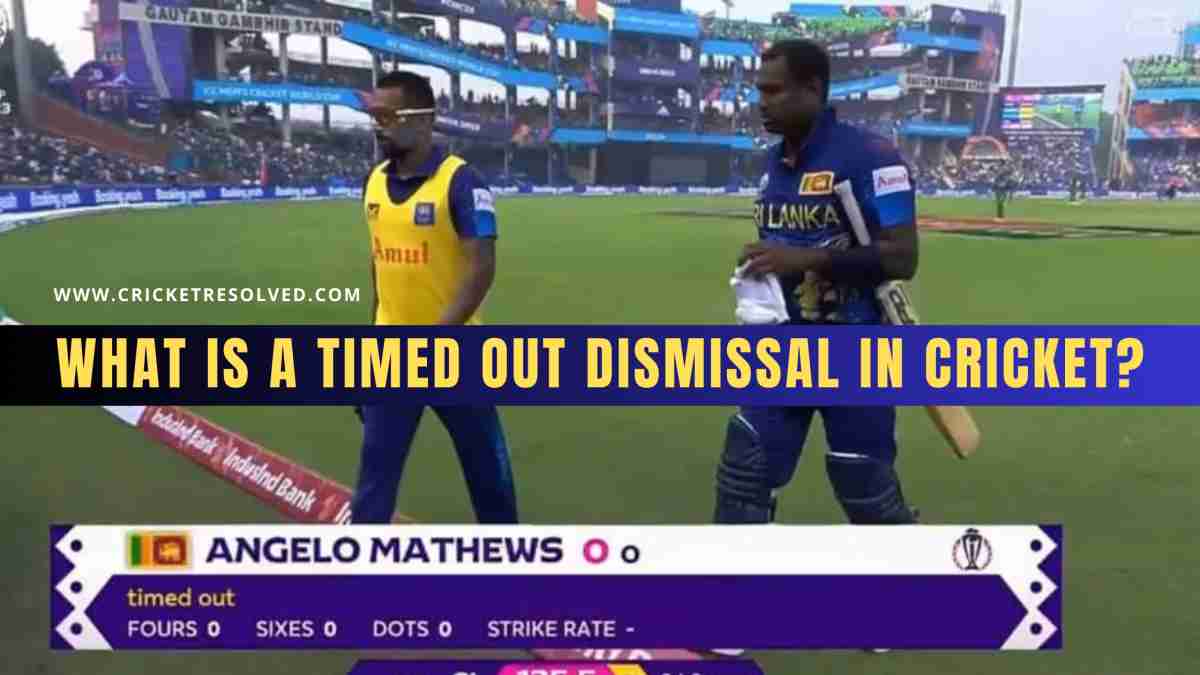
During the Sri Lanka vs Bangladesh match in the 2023 ODI World Cup, fans witnessed a strange and rare dismissal happen for the first time.
Sri Lanka’s Angelo Mathews was given ‘timed out’, making him the first batter in international cricket to be given timed out. But what is timed out? And what are the rules?
In this article, let’s understand the timed out dismissal in cricket.
Timed Out in Cricket
Timed out is one of the legal ways to dismiss a batter. In simple terms, when a batter fails to take the strike after the fall of a wicket in a stipulated time, the batter is given out — timed out.
According to the laws of cricket set by MCC, the incoming batter should be ready to face the next delivery within 3 minutes after a wicket falls or a batter retires. If this rule is not fulfilled, then the fielding captain can appeal for a timed out dismissal, and umpires can declare the incoming batter out, timed out.
However, according to the ICC’s updated rules, the incoming batter must be ready to face the next ball within 2 minutes in Tests and ODIs, while in T20Is the time limit is 1 minute, 30 seconds.
And if such a dismissal happens, then the bowler won’t get credit for the dismissal.
Now, the purpose behind this dismissal is to prevent players from wasting unnecessary time and keep the game on track. Some batters might purposefully take a longer time to come to the pitch, and this is a perfect way to punish such batters.







1 thought on “Explained: What is a Timed Out Dismissal in Cricket?”